botox for wrinkles under eyes
How To Get Rid Of Those Unwanted Wrinkles On Your Eyelids
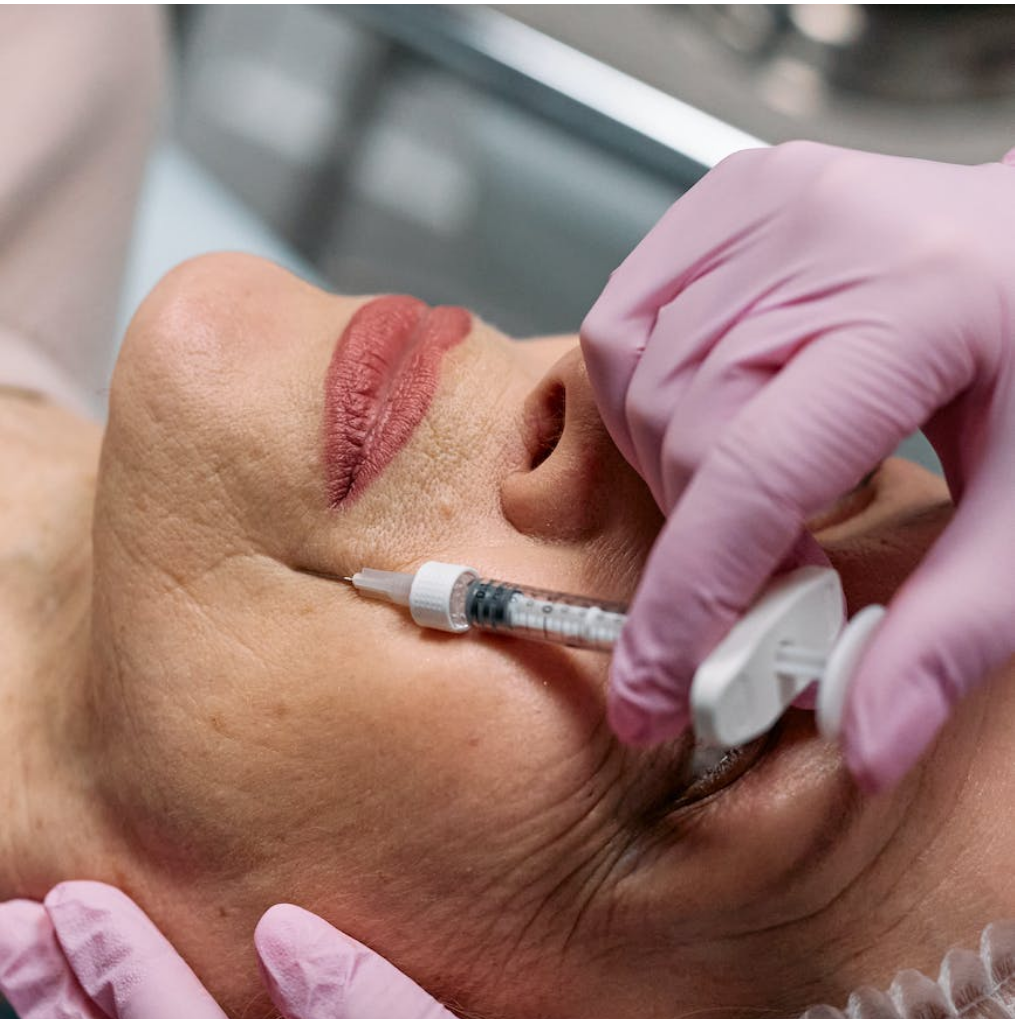
Many factors can cause wrinkles on eyelids, from age to sun damage to genetic factors. However, there are several things you may do to reduce the look of wrinkles on your eyelids.
It’s one of the best things you can do to use a good quality eye cream that contains ingredients like retinol, hyaluronic acid, and vitamin C. These ingredients will help to plump up the skin and smooth out wrinkles.
You should also avoid sun exposure as much as possible, as the UV rays can cause further damage to the skin and exacerbate wrinkles. If you must be outside in the sun, protect your eyelids, wear sunglasses and a hat.
Finally, you can use some at-home remedies to help reduce the appearance of wrinkles. Among the most popular home remedies include:
1. Coconut oil: Apply a small amount of coconut oil and gently massage your skin before bed.
2. Aloe vera:Extract the juice from an aloe vera plant and apply it to your face. Before rinsing it off, let it on for 15 to 20 minutes with lukewarm water.
3. Green tea:Steep in hot water, allow it to cool down, and use a cotton ball to apply it to your face.
4. Egg whites:Whip up an egg white until it becomes frothy, apply it to your face, and wait 15 to 20 minutes before rinsing.
5. Lemon juice: Mix and apply honey on your face, then wait 15 to 20 minutes. Rinse with lukewarm water.
Remember that these at-home remedies may not work for everyone, and it’s essential to consult a dermatologist or skincare specialist before trying new treatments. Additionally, these remedies may take time to show results, so be patient and consistent with your regimen.
How Can I Fix Droopy Eyelids, Circles, and Sags?
The skin around our eyes is fragile and delicate, so it’s not surprising that it’s one of the first places to start aging. If you’re beginning to see droopy eyelids, circles, or sags, you can do a few things to help improve the situation.
First, make sure you’re using a good eye cream. Choose one that contains retinol or other anti-aging ingredients. Apply it nightly to help firm and tone the skin around your eyes.
Second, boost your diet by adding some foods rich in antioxidants. These include things like blueberries, dark chocolate, and green tea. Antioxidants help to protect your skin from damage and can help to improve its overall appearance.
Finally, makeup can be a great way to help disguise droopy eyelids, but choosing the right products is essential. Opt for cream-based eyeshadows instead of powders, as they can help to give your eyes a more lifted appearance.
Invest in a good quality mascara that lengthens and curls your lashes, and be sure to curl them before applying the mascara. Use a highlighter on your brow bone and in the inner corner of your eyes to create the illusion of a brighter, more awake look.
With these tips, you can combat droopy eyelids and look youthful and refreshed. Remember to maintain a healthy lifestyle, protect your skin from the sun, and take care of your eyes with relaxation to keep them looking their best.
[ Img: width=”770 x 373 x 423 cm src=”web site” alt=”old woman close look at crease and eyelash”
decode=”Async” load=”lazy” src Set=”Website”]

EYELID WRINKLES & CLINICALLY - PROVEN PRODUCTS TO TREAT THEM
If you’re concerned about the wrinkles on your eyelids, you’re not alone. Many people struggle with this common issue, which might make you appear older than you are and affect your self-confidence.
The good news is that many clinically-proven products can help reduce eyelid wrinkles. This article will overview the most effective treatments and our top product recommendations.
If you’re looking for a practical and effective way to reduce the wrinkles on your eyelids, read on for more information.
1. Retinoids
Vitamin A derivatives, known as retinoids, have been reducing the look of wrinkles and improving skin texture. Retinoids have different strengths and formulations, including prescription-strength versions like tretinoin and over-the-counter versions like retinol.
They work by boosting cell turnover and collagen production, which can help smooth fine lines and wrinkles. Our top recommendation for an over-the-counter retinoid is RoC Retinol Correxion Deep Wrinkle Night Cream.
2. Botox
The popular injectable treatment botox temporarily smooths out wrinkles and fine lines. Botox is commonly used for wrinkles between the eyebrows (frown lines), forehead wrinkles, and crow’s feet around the eyes. It works by preventing the nerve signals that cause muscles to contract, which can help to relax the skin and reduce the appearance of wrinkles.
If you’re interested in trying Botox for your eyelid wrinkles, we recommend consulting with a board-certified dermatologist or plastic surgeon skilled in injectables.
3. Dermal Fillers
Dermal fillers are injectable gels that give more volume to the skin and plump up wrinkles and fine lines. They work by attracting and retaining water in the skin, which can help to smooth out wrinkles and improve skin texture. Popular dermal fillers for the under-eye area include Restylane and Juvederm.
4. Eye Creams
Eye creams can be a great addition to your anti-aging skincare routine, specifically formulated to target the delicate skin around the eyes. Look for an eye cream that contains ingredients like retinol, hyaluronic acid, and peptides, which help to improve skin texture and reduce wrinkles.
The Olay Regenerist Retinol 24 Night Eye Cream is our top recommendation for an eye cream targeting wrinkles.
Overall, the best way to reduce the appearance of eyelid wrinkles is to use a combination of these treatments and products. Talk to your dermatologist or plastic surgeon about which options may be best for you, and be sure to maintain a healthy skincare routine that includes sunscreen, hydration, and a healthy diet.

WHAT CAUSES DROOPY EYELIDS?
There are several possible causes of droopy eyelids, including:
– Muscle weakness: This is the most common cause of droopy eyelids. As we age, the muscles that hold up our eyelids weaken and can no longer keep the eyelids lifted.
– Excess skin: Our skin becomes thinner and less elastic as we age. This can cause the eyelids’ skin to sag.
– Fatigue: long periods of physical or mental fatigue can cause the eyelids to droop.
– Allergies: The eyelids may swell and become red due to allergies and become irritated, leading to drooping.
– Neurological conditions: certain neurological disorders can cause the eyelids to droop.
These conditions include myasthenia gravis, Parkinson’s disease, and multiple sclerosis.
– Trauma: injuries to the eyelids or surrounding area can cause the eyelids to droop.
– Medications: certain medications, such as muscle relaxants and antihistamines, can cause the eyelids to droop.
– Lifestyle factors: smoking, excessive sun exposure, and poor nutrition contribute to droopy eyelids.
– Genetics: some individuals are predisposed to having droopy eyelids due to their genes.
Treatment options for droopy eyelids may include surgery, medications, or lifestyle changes, depending on the underlying cause. Knowing a healthcare provider is crucial to determining the best course of action.
WELL-AGING EYELIDS
You can do a few things if you’re looking for ways to keep your eyelids looking young and healthy. First, make sure you’re using a gentle, non-irritating eye cream. Massage the cream into your eyelids in a circular motion to help stimulate blood flow and promote collagen production. You can also try using a retinol eye cream, which can help to thicken the skin and reduce the appearance of wrinkles.
If you’re looking for a more dramatic solution, try eyelid surgery. This relatively quick and easy procedure can help tighten and smooth the skin on your eyelids, giving you a more youthful look. However, this option should only be considered if you have significant sagging or excess skin on your eyelids that cannot be remedied with non-surgical options.
Another thing you can do to keep your eyelids looking young is to protect them from the sun. Wear sunglasses and a wide-brimmed hat to shield your eyes from harmful UV rays. It would be best to use sunscreen on your eyelids, but be sure to use a formula specifically designed for the sensitive skin around your eyes.
Finally, make sure you’re getting enough sleep and staying hydrated. Lack of sleep and dehydration can cause your eyes to look puffy and tired, making you look older than you are. Caring for your overall health and wellness will also favor your eyelids.
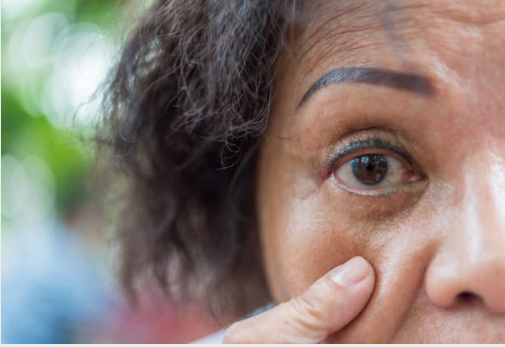
DO DROOPY EYELID EXERCISES EXISTS?
On the question of whether there are any workouts for droopy eyelids exercises exist. While some activities claim to help with droopy eyelids, there is no scientific evidence to support these claims.
That being said, you can do a few things to help reduce the droopy eyelids’ appearance. For example, you can try the following:
– Apply a cold compress on the affected area for a few minutes each day
– Using a coffee-containing eye cream or gel
– Avoiding excess salt and alcohol
– Getting enough sleep
– Exercising regularly
While there is no guarantee that these things will help, they may improve the droopy eyelids’ appearance and relieve you. In addition, you may also consider getting medical treatment if your droopy eyelids are causing discomfort or interfering with your vision.
Treatments include:
– Botox injections to lift the forehead and eyebrow area
– Eyelid surgery (blepharoplasty) to get rid of excess skin and fat
– Ptosis surgery to tighten the muscle that lifts the eyelid
– Non-surgical skin tightening treatments such as Ultherapy and Thermage
In conclusion, droopy eyelid exercises improve the appearance of droopy eyelids. However, while little scientific evidence supports the claim that eyelid exercises can help enhance droopy eyelids’ appearance, some people believe they may be helpful.
If you are considering eyelid exercises, speaking with eye care or other vision care professionals is best to ensure they are safe.
ARE MY EYELIDS SWOLLEN?
If you have red, inflamed, itchy, or watery eyes, you may be experiencing allergic conjunctivitis. Allergic conjunctivitis is expected when the transparent membrane known as the conjunctiva, which covers the white of your eye and lines the inside of your eyelid, becomes irritated.
Many things can cause allergic conjunctivitis, including pollen, dust, mold, animal dander, and certain cosmetics. If you suspect you may have allergic conjunctivitis, you must see an allergist or ophthalmologist for proper diagnosis and treatment.
Some common symptoms of allergic conjunctivitis include:
– Redness and inflammation of the eyes
– Itching or burning sensation
– Watery or teary eyes
– Sensitivity to light
– Mucous discharge
– Swollen eyelids
Depending on the extent of your symptoms and the cause of the allergic reaction, your doctor may recommend various treatments. These can include:
– Over-the-counter or prescription eye drops that contain antihistamines or mast cell stabilizers
– Allergy medications, such as antihistamines or nasal sprays
– Avoidance of allergens, such as keeping pets out of the bedroom or using air filters
– Cool compresses or artificial tears to soothe the eyes
– Immunotherapy, or allergy shots, to help desensitize your immune system to specific allergens.
If you are experiencing symptoms of allergic conjunctivitis, it’s essential to seek medical attention to get the proper diagnosis and treatment. You can manage your symptoms and prevent further eye irritation with the appropriate care.
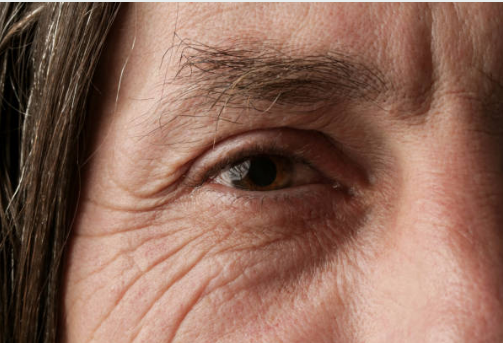
ARE DROOPY EYELIDS SERIOUS?
Droopy eyelids are a condition in which the upper eyelid’s skin hangs over the eyelashes. This can occur in one or both eyelids. While droopy eyelids are not usually severe, they can indicate a deeper underlying issue. If you have droopy eyelids, you should see a doctor to rule out any potential underlying causes.
Some of the potential underlying causes of droopy eyelids include:
1. Age-related changes: Your eyelid support muscles may decrease, resulting in drooping eyelids.
2. Nerve or muscle disorders: Droopy eyelids may result from specific nerve or muscular diseases, such as Horner syndrome or myasthenia gravis.
3. Injuries: Trauma to the eye or eyelid can weaken the muscles or a nerve to become damaged, leading to droopy eyelids.
4. Genetics: Some people are born with droopy eyelids, which can run in families.
5. Medical conditions: Certain medical conditions, such as thyroid problems, can cause droopy eyelids as a symptom.
Treatment for droopy eyelids will depend on the underlying cause. Sometimes, no treatment may be necessary if the drooping is mild and does not cause any problems.
However, if the drooping affects your eyesight or makes you uncomfortable, your doctor may recommend surgery to lift the eyelid. Physical therapy or specific exercises may also be recommended to strengthen the muscles around the eye.
TAKEAWAY
Eyelid wrinkles and droopy eyelids are common concerns. However, there are treatments available to improve the appearance of the eyelids. For wrinkles, Botox injections or laser resurfacing can be used. For droopy eyelids, surgery can be performed to tighten the muscles and skin around the eyelid.
It’s essential to consult a medical professional to determine the best treatment plan based on individual needs and concerns. Additionally, practicing good eye hygiene, such as wearing sunglasses to protect against UV rays, can help prevent further damage to the delicate skin around the eyes.
Adequate hydration and a healthy diet can also help improve the skin’s appearance. The proper treatment and care make achieving a more youthful and refreshed appearance possible.
Incorporating anti-aging products into your skincare routine can also help improve the appearance of fine lines and wrinkles such as retinoids and antioxidants like vitamin C. It’s essential to use these products as directed and to be consistent with their use to see results.
There are also non-surgical options for addressing under-eye wrinkles and bags, such as cosmetic fillers or injectables. These should be discussed with a qualified medical professional to determine if they suit you.
In summary, proper medical care, good eye hygiene, a healthy diet, and anti-aging skin care products can help improve the look of wrinkles and bags under the eyes. Consulting with a medical professional is essential to determine the best treatment options.
5 NATURAL TIPS FOR WRINKLES ON EYELIDS
You’re not alone if you’re concerned about wrinkles on your eyelids. Many people experience this issue as they age, and finding solutions that work can be complex.
While many commercial products claim to reduce wrinkles, you can try some simple, natural tips at home. Here are five natural tips for wrinkles on eyelids:
1. Use a gentle cleanser: Avoid harsh cleansers that can strip away natural oils and moisture from your skin. Instead, opt for a soft, mineral-rich cleaner that will help to keep your skin healthy and hydrated.
2. Apply a hydrating eye cream: Choose an eye cream that contains hyaluronic acid or other ingredients that help to hydrate and plump the skin. Apply the cream nightly, using a light tapping motion with your ring finger to avoid putting too much pressure on the delicate eyelid skin.
3. Stay hydrated: Drinking enough water is crucial for maintaining healthy skin. At least eight glasses of water should be consumed each day. Toxins are removed and keep your skin hydrated from the inside out.
4. Avoid sun exposure: UV rays from the sun can damage your skin and accelerate the aging process. Every day, use a broad-spectrum sunscreen with a minimum SPF of 30, even on cloudy days, and wear a wide-brimmed hat and sunglasses outside.
5. Get enough sleep: Sleep deprivation can cause bags under your eyes and make wrinkles more pronounced. Make an effort to sleep for 7-8 hours each night, and try sleeping on your back to avoid creasing your skin.
These simple tips can help reduce wrinkles on your eyelids and promote overall skin health. Remember to exercise patience and consistency in your skin care routine, as it may take time to see results.
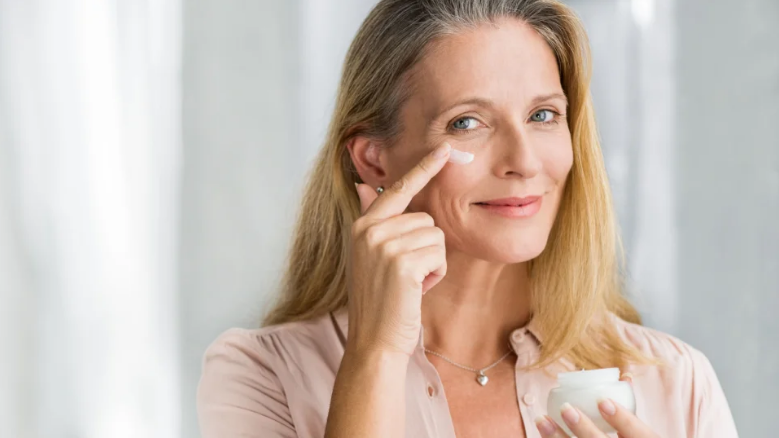
HOW TO FIX DROOPY EYELIDS?
Do your eyelids seem droopy or saggy? If so, you’re not alone. Many people experience droopy eyelids as they age. You may take a few steps to fix droopy eyelids.
One option is to undergo surgery to lift the eyelids. This is a relatively simple procedure that can be done in an outpatient setting. It’s important to note that this option is unsuitable for everyone, and you should consult a doctor to see if it’s right for you.
Another option is to use special creams or treatments to help tighten the skin around the eyes. These options are usually less expensive and have fewer risks than surgery. However, they may not be as effective as surgery.
Finally, you can improve your droopy eyelids with lifestyle changes. These include getting enough sleep, reducing alcohol and tobacco consumption, and maintaining a healthy diet and exercise regimen. Additionally, you can wear sunglasses and use a cooling eye mask to reduce eye strain and puffiness.
Overall, the best option for addressing droopy eyelids will depend on the individual and the severity of the issue. Consulting with a healthcare professional can help determine your best course of action.
H2 HOW TO PREVENT EYELID WRINKLES?
Our eyelids can also develop wrinkles and creases. While this is a natural part of the aging process, there are things we can do to help prevent or minimize the appearance of these wrinkles. Fortunately, we can do a few things to avoid creases in the eyelid.
Here are some suggestions for preventing eyelid wrinkles:
1. Use sunscreen. Sunscreen is one of the finest ways to protect your skin to avoid wrinkles. Be sure to apply sunscreen to your eyelids every day, even if you’re not going outside.
2. Moisturize your eyelids. Be sure to keep your eyelids moisturized to help prevent the formation of wrinkles. You may use a regular face moisturizer or an eye cream designed specifically for the eyelids.
3. Avoid smoking. Smoking can accelerate aging and contribute to wrinkles, including those around the eyes. Quitting smoking can help prevent wrinkles and protect your overall health.
4. Eat a healthy diet. Eating a diet rich in antioxidants and vitamins prevents harm to your skin and wrinkles. Eat many fruits, veggies, wholesome grains, and lean proteins.
5. Get enough sleep. Lack of sleep and poor sleep quality contribute to the formation of wrinkles. Try to get 7-9 hours of sound sleep each night to help prevent wrinkles and improve overall health.
6. Wear sunglasses. Wearing sunglasses can help protect your eyes from the sun’s harmful UV rays and prevent squinting, helps to make wrinkles and fine lines more likely to appear
7. Avoid harsh chemicals. Using harsh soaps, exfoliants, and other skincare products might harm the delicate skin around the eyes and accelerate the formation of wrinkles. Stick to gentle, natural products designed for the eye area.
8. Stay hydrated. Having a lot of water can keep your skin hydrated and prevent wrinkles. Each day should consume at least eight glasses of water.
9. Manage stress. Stress contributes to the formation of wrinkles; as a result, managing stress in a healthy way, such as through exercise, meditation, or mindfulness practices, can help prevent wrinkles and improve overall health.
10. Consider using anti-aging treatments. Various anti-aging therapies, such as retinol creams, chemical peels, and laser treatments, help reduce wrinkles and improve skin health. Consult a skin care professional to determine the best treatment for your needs.
While there are no guaranteed ways to get rid of wrinkles around your eyes, a few options may help. These include using special eye creams, getting botox injections, and undergoing laser treatment. If you are concerned about wrinkles around your eyes, talk to a doctor or cosmetic surgeon to see if these options suit you.
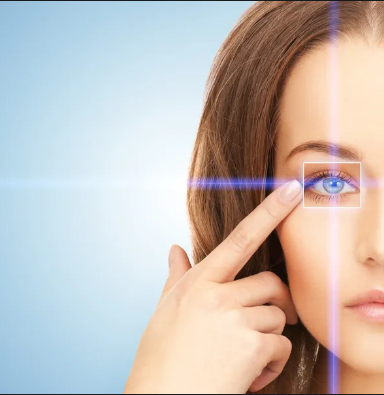
USE A HYDRATING WRINKLE BUSTING EYE CREAM
Like most people, you have a daily skincare routine that includes cleansing, toning, and moisturizing your skin. But what about your eyes? Compared to the rest of your face, Your eye area’s skin is more sensitive and thin, so giving it extra attention is essential. A good eye cream can help hydrate and nourish the skin around your eyes, reducing wrinkles and fine lines.
There are a lot of different eye creams on the market, so how do you choose the right one for you? Look for an eye cream that contains hyaluronic acid, a powerful hydrating ingredient, if you are also searching for an eye cream that contains retinol, which can help to reduce wrinkles.
To give your eyes a little extra TLC, look for an eye cream containing caffeine or green tea extract, as these ingredients can help minimize dark circles and puffiness. Vitamin C is another beneficial ingredient for brightening the skin and reducing dark spots.
It’s also important to consider your skin type when choosing an eye cream. Try a moisturizer if you have dry skin. If you have oily skin rich, look for a mild, oil-free formula soft, that won’t clog pores.
Lastly, remember to choose an eye cream that fits your budget. There are plenty of effective eye creams at different prices, so shop and find one that works. Consistency is vital, so use your eye cream regularly for the best results.
TREAT EYELIDS WITH CARE
The eyelids are a delicate body area and should be treated with care. You can take a few easy steps to keep your eyelids healthy and free from irritation.
First, always clean your eyelids gently with a mild cleanser. Avoid using harsh soaps or irritants on the eyelids, as this can lead to inflammation and irritation.
Second, be sure to moisturize the eyelids regularly. This will help to keep the skin supple to avoid dryness, which can lead to irritation.
Third, if you wear makeup, remove it thoroughly before bed. Leaving makeup on overnight can clog the pores and lead to blemishes.
These simple guidelines can help to keep your eyelids healthy and free from irritation. Wash your hands regularly, practice good hygiene, and avoid sharing cosmetics or personal items with others to prevent the spread of bacteria. In addition, avoid rubbing or touching your eyelids excessively. This can irritate and lead to infection.
If you experience persistent irritation or redness, seek medical attention from an eye care doctor. They can help to diagnose and treat any underlying conditions that may be irritating.
TONE EYELIDS WITH EXERCISE
Tone eyelids are a common condition that can be effectively treated with exercise. This condition is caused by the weakening of the muscles around the eyelids, which leads to drooping and sagging. While tone eyelids can be caused by aging, they can also be caused by other factors such as sun damage, smoking, and dehydration.
Fortunately, tone eyelids can be treated with exercises that strengthen the muscles around the eyelids. They can be performed at home and do not require any special equipment. Some of the most effective activities for tone eyelids include eyelid presses, eyelid lifts, and hamstring curls.
You can perform several different exercises to help tone your eyelids. One should sit straight in a chair and look up at the ceiling. Stay in the position for a few seconds, and then relax. Another exercise is to place your fingertips on your forehead and then raise your eyebrows to try to touch the tips of your fingers. Repeat this 10-15 times.
You can also try facial massage techniques to help tone the muscles around your eyes. Use your fingertips to massage the area around your eyes in a circular motion. You can also use a jade roller or a cold spoon to gently massage and de-puff the eye area.
In addition to exercises and massage, taking care of your skin around the eye area is essential. Use a gentle eye cream or serum to hydrate and protect the delicate skin. And remember to wear sunglasses when you’re outside to help shield your eyes from the sun’s harmful UV rays.
Finally, remember that genetics and aging can affect the appearance of your eyelids, so don’t be too hard on yourself if the exercises and skincare don’t provide dramatic results. Focus on feeling confident and beautiful in your skin, and remember that inner beauty shines through no matter what.
HOW TO FIX DROOPY EYELIDS WITHOUT SURGERY?
If you’re bothered by droopy eyelids but don’t want to undergo surgery, some non-surgical options may help.
Injectable fillers like hyaluronic acid can plump the skin and make the eyelids look less droopy. This treatment is temporary, however, and will need to be repeated every few months to maintain the results.
Botulinum toxin injections are another option for temporarily improving the appearance of droopy eyelids. The toxin works by relaxing the muscles that cause the eyelids to droop. Results from this treatment typically last for three to four months.
If you’re interested in a more permanent solution, eyelid surgery (blepharoplasty) can remove excess fat and skin from the eyelids. One option for this surgery is local anesthesia which typically takes one to two hours. Recovery time varies, but most patients can return to work within seven to ten days.
Blepharoplasty can improve the cosmetic appearance and functionality of droopy eyelids by strengthening the field of vision and reducing heaviness and fatigue. Surgical results are long-lasting, with most patients experiencing optimal results for over ten years.
If you want to avoid surgery, these are all great options. You can achieve the desired results with little effort without going under the knife. First, use eyelid tape or adhesive to hold your eyelids in place. You can also try special eye exercises to help strengthen the muscles around your eyelids. Finally, use makeup tricks to help make your droopy eyelids less noticeable.
DE- PUFF YOUR LIDS
No matter how well you slept the night before, sometimes your eyes can still look puffy and tired in the morning. But there’s no need to suffer through the day with sleepy eyes – you can do a few simple things to de-puff your lids and look awake and refreshed.
First, try splashing some cold water on your face – this can help constrict the blood vessels and reduce swelling. If you’re in a pinch, try putting refrigerated cucumber slices on your eyes. Applying a cold compress is another option for your eyes for a few minutes.
In addition to these quick fixes, you can try a few longer-term solutions to reduce puffiness. For example, sleeping with an extra pillow can help keep the fluid from building up around your eyes overnight. And if you find yourself consistently dealing with puffy eyes, you should examine your diet and lifestyle habits to see if any factors contribute to the problem.Getting enough sleep, staying hydrated, reducing salt intake, and avoiding alcohol and cigarettes can all help reduce puffiness.
Additionally, incorporating foods with anti-inflammatory properties (like leafy greens, berries, and nuts) can help alleviate the swelling. If your puffiness persists, it’s always a good idea to consult a healthcare professional to rule out any underlying medical conditions.
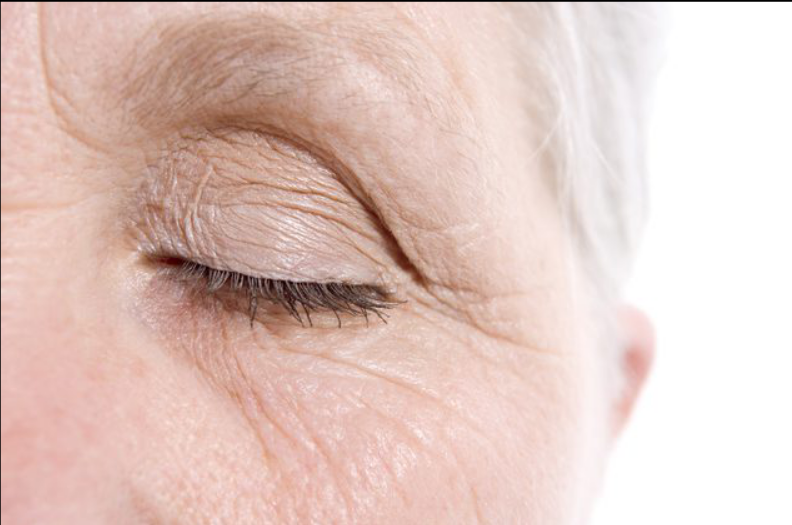
AVOID RETINOL ON EYELIDS
Retinol is a popular skincare ingredient that is known for its anti-aging benefits. However, retinol can irritate the delicate skin close to the eyes.
If you apply retinol to your eyelids, you may experience dryness, redness, and peeling. To avoid these side effects, preventing retinol on your eyelids is best.
If you want to use retinol on your face, apply it to your cheeks, forehead, and neck. These areas are less likely to be irritated by retinol. You can also try using a retinol eye cream for delicate skin.
These eye creams contain lower concentrations of retinol and often have added ingredients to soothe and hydrate the skin, such as vitamin E and hyaluronic acid. Just be sure to patch-test the eye cream first to ensure you don’t experience any adverse reactions.
Another alternative is a gentle, non-irritating eye cream that contains proven anti-aging ingredients such as peptides, antioxidants, and ceramides. These ingredients can help improve the appearance of fine lines and wrinkles without irritation.
In summary, while retinol is a powerful anti-aging ingredient, it must be used cautiously and avoided by applying it directly to delicate skin. Instead, opt for a retinol eye cream or a gentle anti-aging eye cream that can deliver the same benefits without the risk of irritation.
SURGICAL OPTIONS
As people age, they may notice changes in their appearance, such as wrinkles between the eyes or droopy eyelids. These changes are a typical result of aging caused by the skin’s loss of elasticity.
Some surgical possibilities are available to help improve the appearance of wrinkles or droopy eyelids. Blepharoplasty, or eyelid surgery, is a popular option for those looking to enhance the look of their eyes. This procedure can help eliminate excess fat and skin from the eyelids, making you look younger.
While many topical creams and treatments can help reduce the appearance of wrinkles and droopy eyelids, sometimes surgery is the best option. If you are considering surgery to improve the appearance of your eyes, here are a few things you need to know.
Keep reading to learn about the different surgical options for wrinkles and droopy eyelids and the risks and potential complications associated with each type of surgery.
Types of Surgery for Wrinkles and Droopy Eyelids
1. Blepharoplasty
Surgical removal of extra skin fat or muscle from the eyelid area during blepharoplasty. This procedure can help improve the appearance of sagging or drooping eyelids. It can also make the eyes look younger and more awake.
2. Brow Lift
A brow lift is a surgical procedure designed to lift the eyebrows and forehead area. This procedure can help reduce wrinkles and sagging skin in the forehead and upper eyelid area.
3. Laser Resurfacing
Laser resurfacing is a non-invasive procedure that uses lasers to remove the outer layer of skin. This can help reduce wrinkles and fine lines near the eyes. Laser resurfacing can also stimulate collagen production, allowing the skin’s elasticity and firmness.
Risks and Complications
Like all surgical procedures, there are risks and potential complications associated with surgery for wrinkles and droopy eyelids. Some of these risks include:
1. Infection
2. Bleeding
3. Swelling
4. Bruising
5. Scarring
6. Dry eyes
7. Vision changes
It is essential to discuss the risks and potential complications with your surgeon before undergoing any surgery. Additionally, following your surgeon’s pre-and post-operative instructions is crucial to reduce the risk of complications and ensure a successful outcome.
Patients with lower eyelid malposition can benefit from surgical intervention. The most common surgical option is lower eyelid plastic surgery, which can correct the position of eyelid and improve the appearance of the eye.
While surgery is not the only option for improving the appearance of wrinkles and droopy eyelids, it can be an effective option for those looking for long-lasting results.
Additionally, patients should have realistic expectations for the procedure’s outcome and understand the potential risks and complications associated with surgery.
Overall, lower eyelid malposition surgery can be a safe and effective option for patients seeking to improve the function and appearance of their eyelids.
WHAT MAKES YOUR EYES CHANGE IN LOOK AS YOU AGE?
The eye is a complex organ that changes over time. As we age, our eyes can look different due to some factors. One standard change is the formation of cataracts, cloudy areas on the eye’s lens. Cataracts can cause vision problems and make it more difficult to see.
Other changes that can occur as we age include:
The formation of wrinkles around the eyes
A decrease in the production of tears
A loss of color in the eye
While these changes may be unavoidable, there are actions you can take to help protect your eyesight as you age. For example, you can wear sunglasses to help prevent cataracts and use artificial tears if you have dry eyes.
Moreover, imagine you have a family history of eye diseases or have other risk factors such as diabetes or high blood pressure. In that case, it is vital to have regular eye exams to keep an eye on your vision. Your eye doctor can provide personalized recommendations for maintaining eye health and preventing vision loss.
In summary, As we age, the fatty tissue below our eyes begins to atrophy or break down. This loss of volume creates a hollow area known as a tear trough. Tear troughs can make eyes appear sunken, tired, and aged. Other contributing factors to this appearance are wrinkles, fine lines, and dehydration. To combat the formation of tear troughs, many people seek dermal fillers, which can help to restore lost volume and create a smoother, more youthful appearance.
Monitoring your eye health and seeking medical attention if you notice any concerning changes is crucial. Maintaining your eye health and seeking regular eye exams can help preserve your vision and help you enjoy healthy eyes for years.
How do you fix Crepey skin on your eyelids?
Many factors can potentially develop crepey skin on the eyelids, including aging, sun damage, and genetics. While there is no one-size-fits-all solution for this problem, some treatments can help improve the appearance of crepey eyelid skin.
One option is to use a retinol cream, it helps promote collagen production and improve the skin’s elasticity. Another option is to use an exfoliating serum or scrub, which can help to remove dead skin cells and improve circulation. Finally, use a hyaluronic acid serum to help hydrate and plump the skin.
There are many ways to improve the appearance of crepey skin on your eyelids. Some of the most effective methods include using retinoids, applying sunscreen, and getting enough sleep.
One is to use an eye cream that contains retinol or other collagen-stimulating ingredients. Another is to use a firming eye serum before applying makeup. Finally, you can apply a small amount of Botox to relax the muscles around the eyes and reduce the appearance of wrinkles.